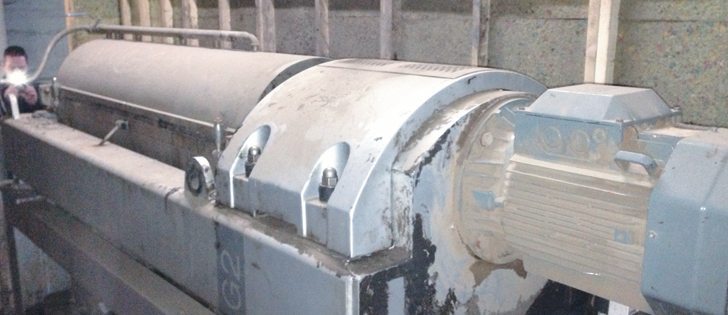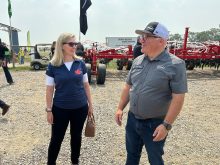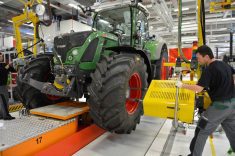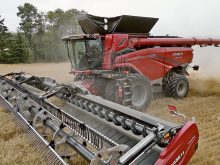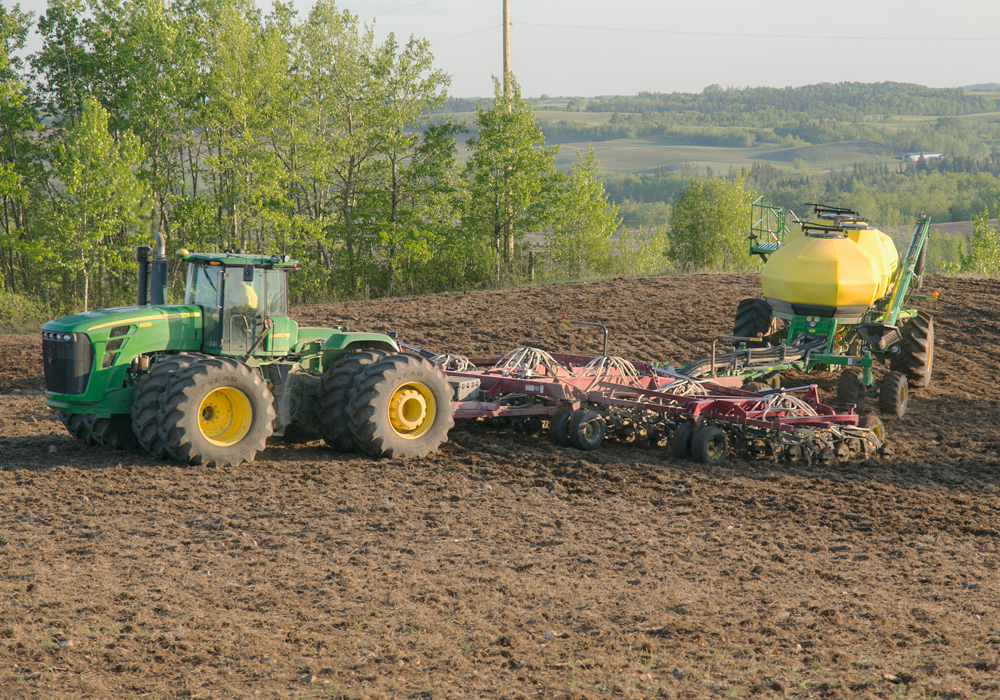Principles behind the modern centrifuge manure separator and the old stainless steel hand-crank cream separator are much the same, the main difference being the product that passes through.
Agra-Gold, a manure management consulting company, studied a pair of centrifuge machines installed at two hog finishing operations in Quebec: an Andritz built in Austria and an Alfa Laval built in Canada.
The Andrtiz was installed in 2007 at Agromex’s 8,000 head finishing operation that produces 3.3 million gallons of manure while generating 785 tonnes of solids a year. A 12,000 gallon pre-mixing tank creates a homogenous product to go into the centrifuge.
Read Also

Final crop reports show strong yields, quality
Crops yielded above average across the Prairies this year, and quality is generally average to above-average.
The centrifuge was bought to remove phosphorus from the hog slurry. It runs 12 hours a day, four days a week, mainly when management is onsite. The part-time schedule removes only half the phosphorus.
The solids are stored on-site for three weeks before they are hauled three kilometres by dump truck to a central storage facility, where they are mixed with chicken manure. This reduces chicken manure dust.
The nutrient value of the mixed manure solids is higher than straight hog manure and has a higher value.
Before mixing, the straight hog manure has 19.1 pounds of total nitrogen per tonne and 33 lb. per tonne of phosphorus pent oxide with dry matter of 34 percent.
After mixing with poultry manure, it has 44.6 lb. total nitrogen per tonne and 35.2 lb. per tonne of phosphorus pent oxide with a dry matter of 50 percent.
Brokers in Quebec buy and sell manure based on this analysis.
It is picked up from a central mixing site for a cash price of $10 per tonne if the quantity is less than 500 tonnes and $5 per tonne for higher quantities.
Farmers see enough value in the mixed manure to pay to have it hauled as far as 100 km away. It is applied on corn and cereal fields at a rate up to five tonnes per acre using conventional solid manure spreading equipment.
An agronomist determines the application rate based on detailed analysis of the solids. Each delivery must be accompanied by a signed agreement.
The 9,000 head Fournier finishing operation owns 1,300 acres of corn land that still require phosphorus. As a result, some of the manure generated on the farm is not run through a centrifuge.
It installed an Alfa Laval G2 centrifuge two years ago to treat five million gallons of liquid hog manure. The centrifuge runs 24 hours a day from mid-February until the end of the year.
The average dry matter of incoming manure is four to five percent.
The farm has a 42,000 gallon pre-mixing tank to create a homogenous product to go into the machine. The unit’s 30 micron screen removes 70 percent of the phosphorus with no added polymers or flocculants.
Fresh solid manure coming out of the centrifuge contains 28.4 lb. total nitrogen per tonne and 58.3 lb. per tonne of phosphorus pent oxide with dry matter of 29 percent.
The analysis is a bit better for manure that has sat for a while, but piles of older manure can heat to 90 C, which is a worry for the owner and his insurance agent. The manure from these older piles has 35.4 lb. total nitrogen per tonne and 64.9 lb. per tonne of phosphorus pent oxide with dry matter of 30 percent.
The solids must be immediately applied to the land once out of the centrifuge or they will revert back to slurry if it rains during application. They are transported a maximum of 50 km from the centrifuge to the field in a tarped truck.
Buyers pick up the product and are responsible for transportation and application. They have paid $5 to $25 per tonne in recent years. The product is applied to corn land or organic cropland at a rate of two tonnes per acre.
Contact ron.lyseng@producer.com


